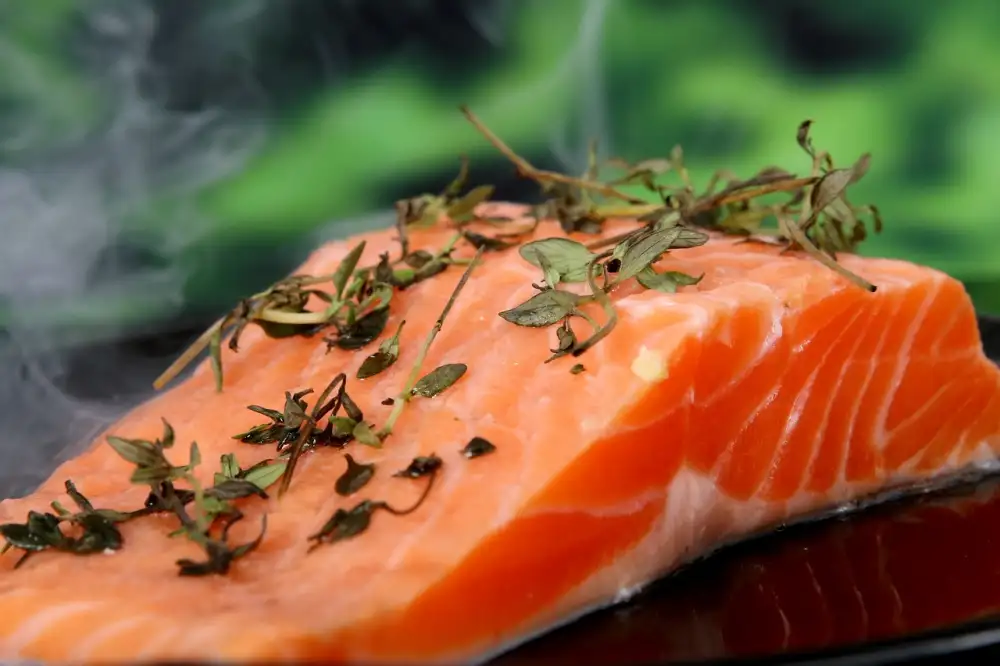Is Your Salmon Spoiled? A Foolproof Guide to Determining Bad Fish

- Visual cues: Examining the appearance of salmon
- Smell test: Detecting foul odors from salmon
- Texture check: Assessing the texture of salmon
- Checking for sliminess: Identifying signs of spoilage
- Mold and discoloration: Noticing abnormal growth and color changes
- Expiration date and storage: Considering the shelf life and proper storage of salmon
As food lovers, we all strive to enjoy fresh and delicious meals. When it comes to seafood, particularly salmon, it is crucial to be able to identify signs of spoilage. Consuming spoiled salmon can lead to foodborne illnesses and ruin your dining experience. In this guide, we will explore foolproof methods to determine if your salmon has gone bad. By equipping yourself with this knowledge, you can ensure that every bite of salmon you enjoy is safe and delectable. So let's dive in and learn how to spot bad fish!
Visual cues: Examining the appearance of salmon
When it comes to determining if your salmon is spoiled, visual cues can be a helpful indicator. Fresh salmon should have a vibrant color, ranging from pink to orange, depending on the species. The flesh should appear moist and shiny, with no dry or discolored patches. Avoid salmon that has a dull or grayish appearance, as this could be a sign of spoilage. Additionally, check for any visible signs of mold or slime on the surface of the fish. Trust your eyes and choose salmon that looks fresh and appealing to ensure a delicious and safe dining experience.
Smell test: Detecting foul odors from salmon
When it comes to determining the freshness of salmon, your nose can be a powerful tool. A foul odor is one of the most obvious signs that the fish has gone bad. Fresh salmon should have a mild, slightly briny smell reminiscent of the ocean. If you detect any strong, pungent, or ammonia-like odors, it's a clear indication that the salmon is spoiled and should not be consumed. Trust your sense of smell and err on the side of caution when it comes to fishy aromas.
Texture check: Assessing the texture of salmon
When it comes to assessing the quality of salmon, texture plays a crucial role. Fresh salmon should have a firm and slightly springy texture. Gently press your finger against the flesh of the fish - if it leaves an indentation and feels mushy or slimy, it is a clear indication that the salmon has gone bad. Additionally, if you notice any separation of the muscle fibers or flakiness, it's a sign that the fish is no longer fresh. Remember, a good-quality salmon should have a solid and resilient texture that holds its shape when touched.
Checking for sliminess: Identifying signs of spoilage
Another important visual cue to look out for when determining the freshness of salmon is its texture. Fresh salmon should have a firm and slightly springy texture. However, if you notice that the fish feels slimy or sticky to the touch, it is likely spoiled.
When salmon starts to spoil, bacteria begin to multiply, causing a slimy film to develop on its surface. This sliminess is a clear indication that the fish has gone bad and should not be consumed.
To check for sliminess, gently run your fingers over the surface of the salmon. If you feel any stickiness or slipperiness, it's best to discard the fish immediately.
Remember, fresh salmon should never feel slimy or sticky. So always trust your sense of touch when assessing the quality of your fish.
Mold and discoloration: Noticing abnormal growth and color changes
Mold and discoloration are clear signs of spoiled salmon. If you notice any abnormal growth or patches of green, black, or white mold on the fish, it is best to discard it immediately. Additionally, be wary of any significant changes in color, such as a dull or faded appearance. Fresh salmon should have vibrant pink or reddish hues. Any discoloration could indicate that the fish is no longer safe to consume. Always prioritize your health and avoid consuming salmon with mold or unusual color changes.
Expiration date and storage: Considering the shelf life and proper storage of salmon
When it comes to determining the freshness of salmon, checking the expiration date and understanding proper storage is crucial. Salmon typically has a shelf life of about 2-3 days in the refrigerator, so it's important to consume it before it expires. Always check the packaging for the expiration date and make sure to purchase salmon that has a longer shelf life if you don't plan on consuming it immediately.
Proper storage is also key in maintaining the quality of salmon. Store fresh salmon in the coldest part of your refrigerator, ideally at a temperature below 40°F (4°C). If you're not planning on using it within a day or two, consider freezing it to extend its shelf life. Wrap it tightly in plastic wrap or place it in an airtight container before freezing.
Additionally, avoid storing raw salmon near other foods to prevent cross-contamination and potential spoilage. It's best to keep it separate from other items and place it on a tray or plate to catch any drippings.
By being mindful of expiration dates and following proper storage practices, you can ensure that your salmon stays fresh and safe for consumption.
In conclusion, being able to identify spoiled salmon is essential for every food lover. By understanding the visual cues, smell test, texture check, sliminess, mold and discoloration, expiration date, and proper storage of salmon, you can ensure that you never consume bad fish. Don't let a spoiled piece of salmon ruin your culinary experience. Stay informed and trust your senses when it comes to determining the freshness of this delicious seafood.
Published: 25. 11. 2023
Category: Food



